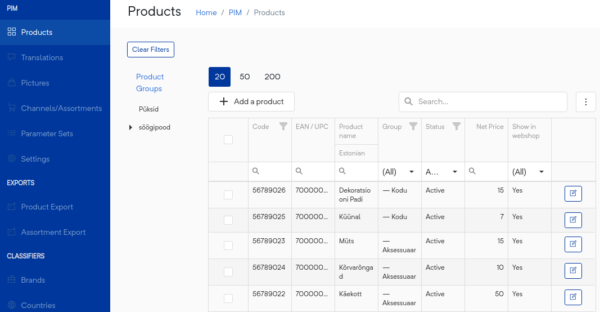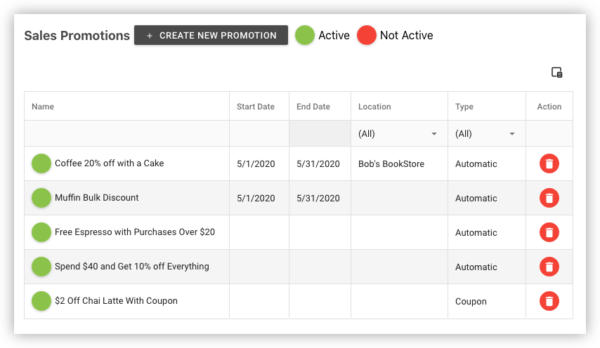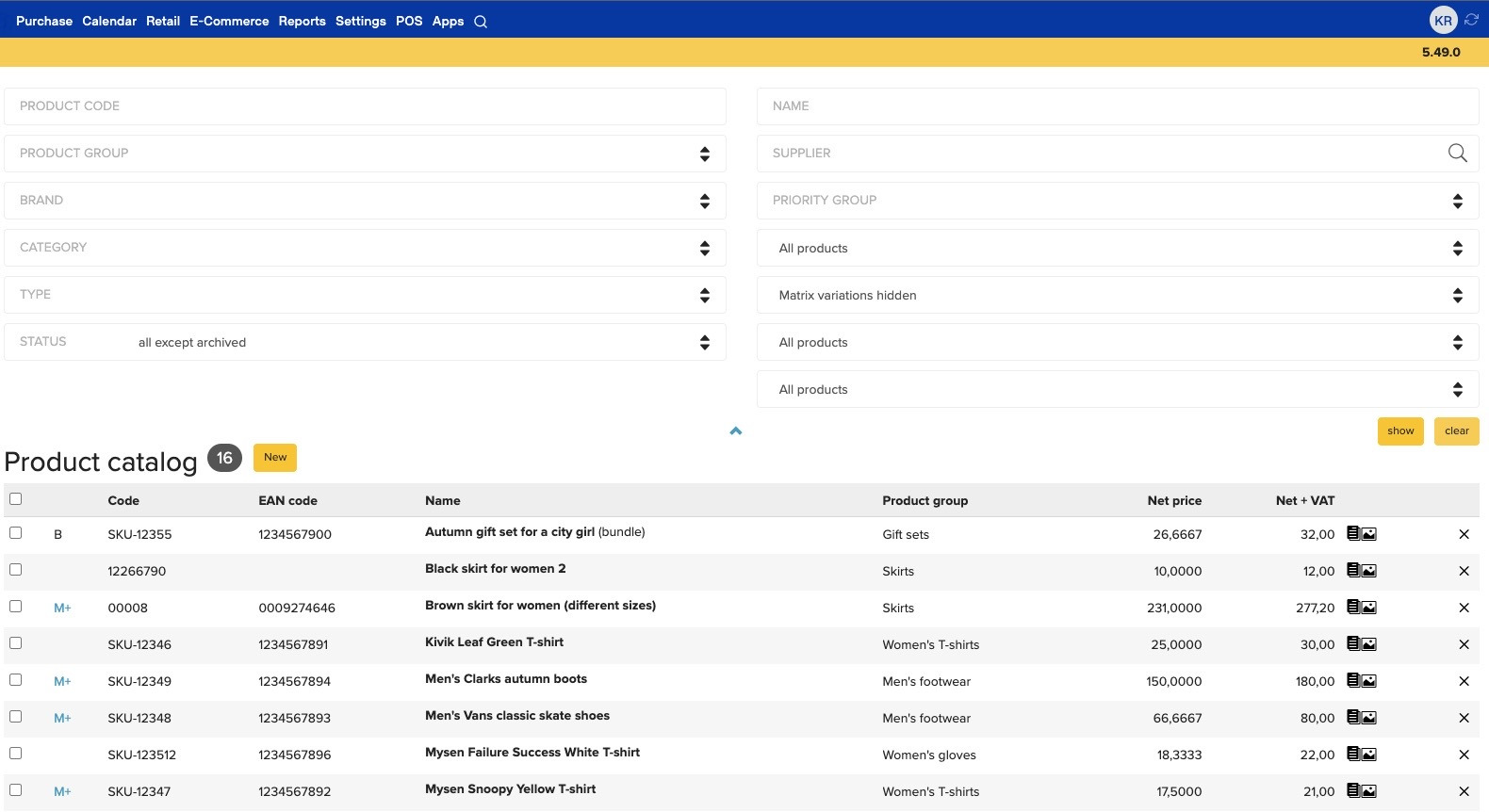Last year was like a rollercoaster ride for businesses – US GDP growth, record-high holiday sales numbers, the bankruptcies of retail giants, global trade tensions, etc. Plus good news on the labor market and increasing consumer confidence.
The IMF and World Bank have lowered their economic growth forecasts and experts warn that the rising interest rates in the US, an economic war and geopolitical tensions will have a painful impact on the economy.
Economic analysts from Deloitte warn that retailers that thrived in 2018 should be prepared for setbacks this year. Their Q4 forecast estimates a significant decline in retail growth: the 5.5% growth from Q4 of 2018 will fall to 3.4–4.1% by Q4 this year. Consumers are cutting back on expenses, while loan costs and pressure on prices are on the rise; the initial effect of the tax reform has also abated, explains Deloitte.
How to Prepare for a Safe Financial Year?
Regardless of which specialist recommendations or analyses you read, three key areas keep coming up: customers, technology and investments. This might not sound like earth-shattering wisdom, but the importance of these factors becomes clear when we look past them and, more particularly, several steps ahead from where we are. So, let’s get going.
Step 1: Customers
Use any information you collect wisely. POS software will do a lot of the valuable work for you. Erply comes with a CRM module, so it’s got your data analysis needs covered.
Take a good look at your loyalty programs. POS software allows you to customize your approach to the choices and preferences of each individual customer. Erply offers a variety of price formation strategies (special prices for products and product groups, loyalty points or points for a set purchase sum, coupon campaigns, birthday and buy-two-get-three campaigns, etc.) in addition to vouchers and gift cards.
Ask the customer for feedback on your product or service. This will help you understand what their expectations are – maybe your customers would love a delivery service or customer events. It may be common knowledge, but you can take it a step further – be as personal as possible, because exclusive (or limited) deals are a valuable currency for many customers.
Help your customer understand what they’re getting from you. Personal offers, purchase recommendations, discounts, special campaigns – show the customer that you’re putting the data you’ve collected to actual use and help the customer understand why you collect data.
Make comfort count. The primary reason people shop online is comfort. You don’t need statistics to know that this is a growing trend that is primarily motivated by comfort. Bet on what customers want and make their life comfortable.
But then why do customers still visit brick-and-mortar stores if shopping is much more comfortable using a smartphone or PC? Primarily for two reasons – they don’t want to wait for delivery and they want to touch-try-smell the product before buying it. Here’s where you come in again by making the customers’ shopping experience pleasant and fun. Make your store appeal to their senses. Businesses that have turned current sales reasoning topsy-turvy are the ones that are going to survive this skirmish. Selling your goods at any cost is no longer what it’s about – what you should be doing is entertaining the customer. Tell them the origin story of the product, make the customer listen, taste and take part.
If you’ve only got a web store, definitely consider opening a pop-up store. Jump in the middle of your target group or relevant community. Many small stores in the US have got on board with the trend and opened pop-up stores in large shopping malls to allow customers to taste or touch the products before making the purchase.
Allow your customers to order online and pick the items up at the store. According to the National Retail Federation (NRF), this was the preferred shopping method for 89 million Americans during the previous holiday season. The popularity of this option increased by a whopping 73% this last Thanksgiving and Black Friday compared to 2017. The option is mutually beneficial: the customer doesn’t have to pay for delivery and the merchant profits because 64% of the customers that come to pick up an order end up making at least one other purchase, confirms NRF.
Think outside the box and consider different possibilities for collaboration. Take a look at what other businesses and sectors are doing to add value to your goods or products. Sure, it’s a challenge and requires some effort, but it’ll be worth it in the end! For example, you could try a deal that lets customers use your store’s loyalty points at a local café.
Allow your customers to trade loyalty points by handing them out or selling them. You can create a market platform on your website that you can use to keep an eye on trends and customer expectations. It could also function as a space, where you can guide and influence customers.
Step 2: Technology
Enlist AI-based tools. Install an interactive screen near popular products in your brick-and-mortar store and offer price comparison options on your website to allow your customers to select the product that suits them best.
AI (chat bots) and MR (mixed reality) are the undeniable future of retail. Although many admit to finding talking to a robot deterring, a chat bot is more than capable of answering basic questions and can do it 24/7. This is why many airlines, hotels, convenience stores, etc. are opting for chat bots.
The easiest place to implement your chat bot is on Facebook Messenger that has a decent set of basic tools available for you – no IT team or API development required.
MR is a slightly different story. Pokémon Go introduced the wonders of MR to the world a couple years ago; at its peak, the game had 45 million active daily users. Clearly the tech has potential to be a customer magnet, but developing MR is quite expensive. So, what should you do?
Collaborate with startups. Startups often introduce amazing innovations that might be just the thing you’re looking for. You could try looking for ideas on crowdfunding websites. You never know where you might encounter a valuable future partner.
Group buying platforms that mediate orders and, instead of same-day delivery, promise delivery in a couple hours, are also gaining momentum. The idea is that the businesses that use the platform can make group purchases at any stage, enabling each step in production and sales to meet minimum quantities and have access to greater discounts.
Various mediation services are another increasingly popular option. For example, you don’t need to store your goods in a large central warehouse – any entrepreneur who has some extra space in their store can rent an interim warehouse to local manufacturers or other owners. This idea forms networks of interdependent small companies and guarantees quick delivery to customers.
And if you’re already looking towards IT startups, you might stumble upon an enthusiastic youth interested in building a Google Street View style virtual store of your brick-and-mortar store where customers can move in 3D space, look up prices and zoom in on products.
You might also consider adopting a cryptocurrency. Although we haven’t seen the breakthrough of blockchain just yet, it has proven incredibly popular among the younger generation of shoppers. Several online stores now accept cryptocurrency payments for everything from goods and services to hotel bookings and more. Apple’s AppStore also accepts cryptocurrency payments.
Be warned, however, that the cryptocurrency market is currently unregulated, incredibly volatile and risky. Do keep an eye on it, though, because the circumstances can change at a moment’s notice. Once regulations are approved, the market presents a quick, comfortable and relatively forgery-proof payment method with minimal transaction fees.
Step 3: Investments
Go over your investment plan for the upcoming two years – your priorities and investment strategy. Deloitte claims that retail businesses that reinvest more are more likely to survive a crisis. You might want to invest in self-service and mobile points-of-sale or introduce pick-up lockers to your store for customers who can’t find the time to collect their purchases during opening hours.
Try to integrate your investments, for example by using various sales and marketing channels. You should take into account that smartphones are becoming an increasingly more relevant ad channel – according to NRF, 35% of all consumer purchase decision last year were made after browsing for info on a smartphone. Thus, it’s probably wise to concentrate your attention on harnessing the possibilities of mobile ads.
If you want to refresh your memory on how to get different sales channels to work together, read our recent post on omnichannel sales. Also take a fresh look at what Erply’s POS software has to offer – you might find ideas for growth on that list as well.
Increasingly more companies are turning their eyes towards China, where innovative retail businesses have managed to create a smooth and functional supply chain that we can all learn from. But let’s pick up on that in another post.
When you find a moment, try and map new markets and come up with ways to reach new customers, even if you do it only as a thought exercise. Geographic and demographic versatility provide added security in every scenario.
Thoroughly go over the following 12 questions:
- Can you find ways to cut back?
- Can you discard a product/service at a moments notice in the event of a crisis?
- Can you get the same products at a cheaper price somewhere else?
- Is there any way to optimize your services?
- Can you get a better deal on your rent?
- Can you negotiate better agreements with partners?
- Why do you matter?
- How important are you for your customers?
- Who do you provide services/goods to?
- How do you provide services/goods?
- Why should the customer care about you?
- Were you honest with yourself when answering these questions?











